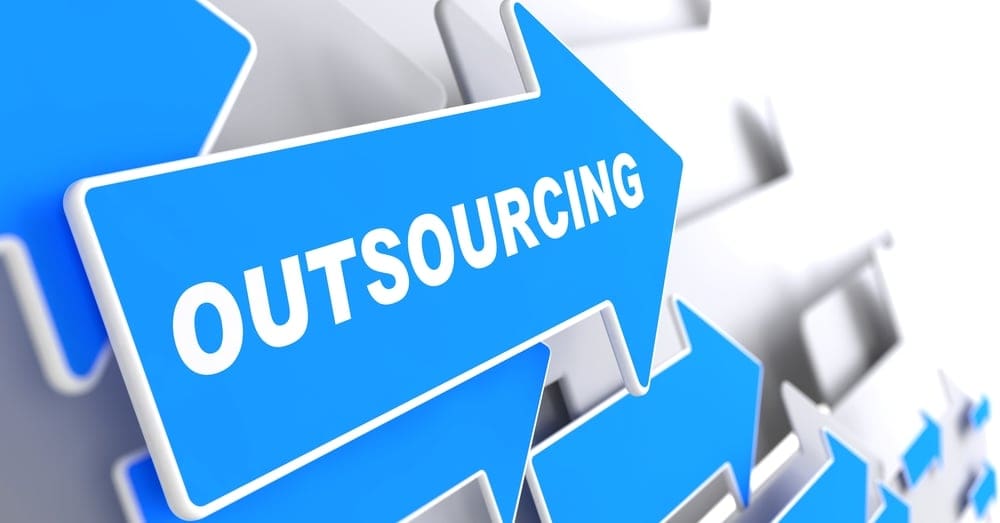Insource vs. Outsource: How to Choose Which Is Right for You
March 21, 2024 by Rebecca Ahn

Request Pricing
Compare our rates to other providers
The question of whether to insource vs. outsource is a decision that many businesses find themselves questioning in the modern age of globalization. Unfortunately, there is no one easy right answer. It depends on the situation and what business activities you are considering insourcing vs. outsourcing.
On one hand, keeping business functions in-house can have immense value for an organization, including more control, ownership, and ease of communication. On the other hand, there can be a variety of benefits to gain from outsourcing certain tasks or projects, which could help cut costs, bring in valuable outside expertise, and protect your internal staff’s time.
In this article, we’ll explore the differences between insourcing vs. outsourcing, their various advantages and disadvantages, and how to decide which path is best for your organization’s needs before you pull the trigger and sign an outsourcing contract.
What Does Insourcing vs. Outsourcing Mean?
Before we get into why the decision to insource vs. outsource is so important, let’s make sure that you understand what these terms actually mean.
“Insource” or “insourcing” refers to the process of having employees within your company complete a task or business process. You are keeping the work in-house with your own internal staff.
“Outsource” or “outsourcing” refers to the process of having a third party external to your company–that is not an employee–complete the task or business process. This could be an outsourcing agency, consultant, or independent contractor.
Say, for example, that you have a lot of accounts payable and receivable work at your organization. You could hire an employee of your organization to handle these duties, or you could outsource it to a company that specializes in this type of accounting work. This is an excellent and very common example of choosing between insourcing vs. outsourcing.
Other common examples of business activities that might be a good fit for outsourcing vs. insourcing include IT services, manufacturing, project-based work such as advertising campaigns, human resources functions such as exit interviews or payroll, and other professional services like legal counsel.
There are many ways to reach this decision. Your business sales could be doing so well that you need to consider outsourcing to help keep up with the increased volume of production and distribution. Or your business could be going through a financial downturn, causing you to look at outsourcing as a tool for either containing costs or boosting sales.
Either way, the decision to insource vs. outsource is a very serious one that shouldn’t be taken lightly.
There is a lot at stake with this decision. Your choice could be what enables your business to grow at an exponential rate, or saves your company from going under. However, it could also be the reason that your business struggles or does end up going under.
Now that you understand the importance of the decision to insource vs. outsource, let’s go over the pros and cons of each choice. You can also download our comprehensive outsourcing checklist to help you weigh your options and choose the right path for your organization.

What Are Insourcing vs. Outsourcing Pros and Cons?
Insourcing Advantages
Let’s start with the advantages of choosing insourcing in the insource vs. outsource debate. There are many great reasons why this might be the best path for your organization.
The first reason is that when you insource a function of your business, you usually have more control over said function or process. Take our previous example: if you were to hire a new employee to manage your accounts payable and receivable, you would have much more say in how they were trained. You would have the ability to set guidelines for how they complete these accounting duties, which you may not have as much control over when working with an outsourcing firm.
Secondly, an internal employee will also generally feel more pride and ownership in their work. This means that they will go the extra mile to make sure that your company’s accounts payable and receivable management is top notch. They will be more invested and engaged, as well as more innovative, and likely have less mistakes than an employee of an outsourcing firm that feels little loyalty to your business.
This concept is fairly well known and applicable to numerous different insourcing vs. outsourcing situations. You will always feel more ownership and pride in something that you own versus something that someone else owns.
Having internal employees do your accounts payable and receivable will also allow you to customize the process and respond to changes more quickly than if you were to outsource this work.
Since the outsourcing firm has many different clients that they have to service, they will likely need to standardize their process across all of their clients so that they can scale their services and maintain sufficient support for everyone. This means that any customization or aspects that you’d like done in a specific way differently from their processes will more than likely be off the table.
For example, let’s say that your business acquires a new customer that needs their accounts payable done in a specific way. Your internal employee will be much more able to accommodate that request quickly than that of an outsourcing firm, which would require you to first call and get a price quote for the new change in process before you could implement that for your new customer.
Insourcing Disadvantages
While insourcing may have all of these advantages we explored above, it can also come with its fair share of disadvantages.
Firstly, the cost of insourcing can be much more expensive over the long run than outsourcing. Recruiting, hiring, and training a new internal employee is expensive, especially if the role you’re hiring them for requires highly specialized skills and training. Even upskilling or reskilling an existing internal employee can be pretty pricey. Then, as your need for more of these skills grow, continuing to do this could be even more costly and time consuming.
With an outsourcing firm, you don’t have to pay all of those costs associated with hiring and training someone. (Though you will still need to train your team on selecting, onboarding, and working with the outsourcing firm.) You simply contract the outsourcing firm to provide their own skilled staff which they have hired. Then you can increase your monthly spend with them the more work you have. That way, if you have say 60 hours of accounts payable and receivable work every week, you can specify that amount in your agreement with the outsourcing firm and feel assured that they will be capable of handling that capacity.
If you are looking to insource, you will have to decide between hiring one employee internally to do the job, and asking them to work 20 hours of overtime each week, or hiring two employees who each won’t have enough work for a full-time 40-hour week. This will cost you more for each employee, especially if you are paying them a full-time salary while they are doing less than full-time work.
Then the bigger your company gets, the more this cost could grow. Let’s say that you need a whole team of accounting employees to handle your company’s accounts payable and receivable workload. Do you then need to hire a manager to lead that team? Will you need to provide ongoing training to make sure their skills are up-to-date with industry standards?
In some of these situations, the scalability of an insourced team is not as easy or customizable as contracting with an outsourcing company. So it’s good to be aware of your specific needs and whether the disadvantages of insourcing outweigh the potential advantages.
Outsourcing Disadvantages
On the flip side, let’s look at the various outsourcing pros and cons. In the insource vs. outsource debate, the positives of insourcing are usually the inverse, meaning the negatives of outsourcing. The same is true vice versa with the disadvantages of insourcing often equating to the advantages of outsourcing. So we can take what we discussed above for insourcing pros and cons, and look at their reverse to understand outsourcing pros and cons.
For example, insourcing lets you have more control, allows your employees to feel more ownership, and provides for more customization and flexibility for quick changes. However, outsourcing firms most likely won’t offer those benefits.
The employees of the outsourcing firm won’t have the same pride in the work that they do for your company, because your company isn’t the one they feel loyal to. If you find a really great outsourcing firm that is especially focused on customer satisfaction, this might not be the case. But much of the time, it is.
The outsourcing firm also has many other clients besides you. So they don’t have the same capacity to quickly respond to changes or customize a process just the way your business likes it. Every outsourcing firm is different, but generally this is a downside to outsourcing certain business processes.
It’s important to be aware of all these potential points of failure when outsourcing before you make the decision between outsourcing vs. insourcing. Misaligned goals, expectations, and communication can also contribute to the disadvantages of outsourcing. Some of these can be mitigated in your communication with your chosen outsourcing firm, but they are good to be conscious of even before you choose which path to take.
Outsourcing Advantages
Of course, as we discussed earlier, insourcing also has its downfalls. The increased costs of hiring, training, and scaling internal staff can easily get out of control if your company is growing quickly. That is where outsourcing wins in the insource vs. outsource debate.
Outsourcing is a great option for containing costs over the long run, especially if you are also offshoring, meaning you are outsourcing to a firm located overseas. Outsourcing firms are capable of scaling much more easily than your insourced staff because of the amount of resources that they have on hand. Adding on 20 more hours of work each week won’t phase your outsourcing firm, but it could put a huge strain on your internal employees.
Outsourcing firms are also responsible for their own hiring and training. So when you need to get something done, you won’t have to worry about a ramp-up time to onboard a new person for that task.
In addition, since the outsourcing firm specializes in that specific business process or task, they usually offer expert-level knowledge at a more affordable price. Hiring internal staff with that level of knowledge internally in your organization could be too expensive for your bottom line. So it might make sense to instead rely on an outsourcing firm that already boasts that expertise.
Insource vs. Outsource: The Final Decision
When your company is stuck on the insource vs. outsource decision, it is important to assess all of the options available to you and pick the best one for your business objectives. Weigh all of the potential insourcing vs. outsourcing pros and cons based on your specific situation, needs, and goals.
Some examples of business functions or activities that are commonly outsourced include human resources, accounting, payroll, IT services, manufacturing, and design. Whatever functions or tasks you are considering outsourcing vs. insourcing will dictate the specific advantages and disadvantages you need to evaluate, and which strategy will ultimately be best for your organization.
While insourcing allows for more control and customizability, outsourcing can be more scalable and cost-effective. Insourcing might be the right path if you have enough internal staff and budget to cover your business functions and prefer to keep them in-house. Outsourcing, on the other hand, might be the better strategy if your internal staff is too small or not sufficiently skilled in the specific business functions in question.
If you do decide to go with an outsourcing strategy, make sure you then do your due diligence in thoroughly evaluating outsourcing firms to pick the right partner for your needs and goals.
Need help deciding which option is better for your business? Click below to download our Outsourcing Checklist to help you evaluate which path is right for your organization.

More from Careerminds
In need of outplacement assistance?
At Careerminds, we care about people first. That’s why we offer personalized talent management solutions for every level at lower costs, globally.





